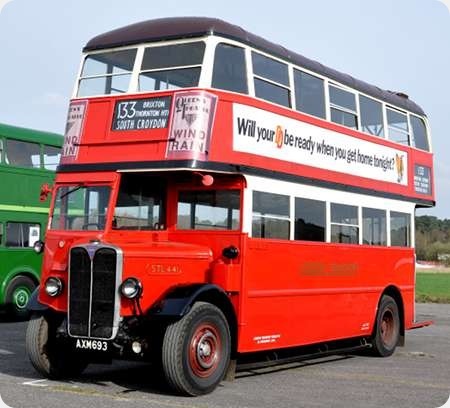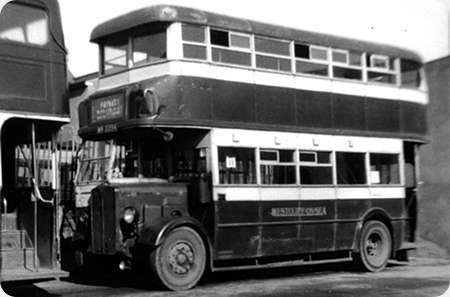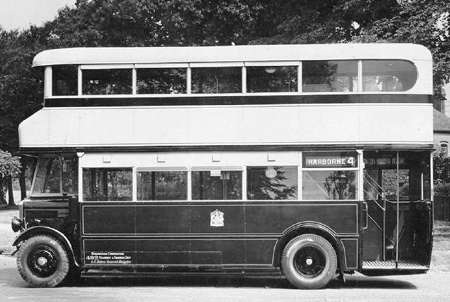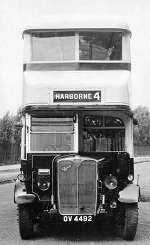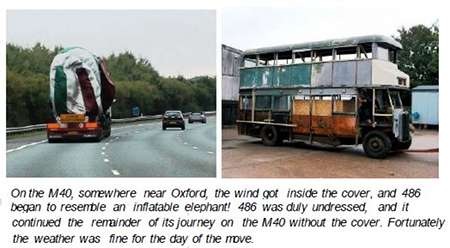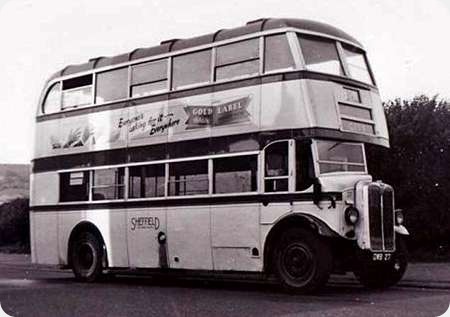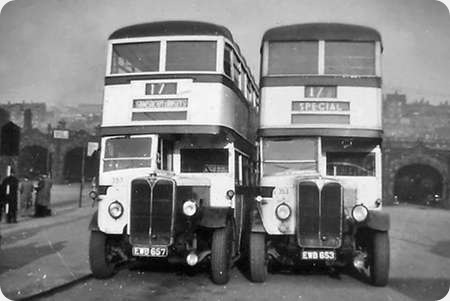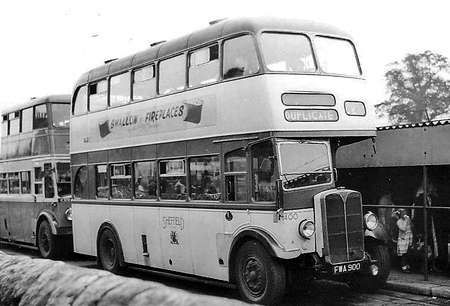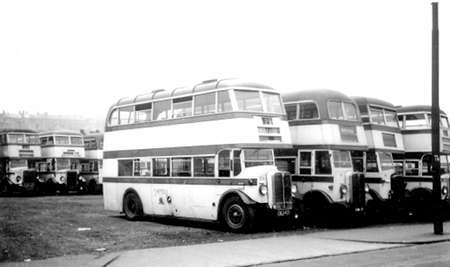London Transport – AEC Regent I – AXM 693 – STL441
London Transport
1934
AEC Regent I
London Transport H26/30R
AXM 693 is an AEC Regent (Regent I in some listings but not in all of them) from 1934, new to London Transport with fleet number STL441. Her LPTB body has H56R seating layout and she now resides at Brooklands, following the relocation of the collection from Cobham. We see her during the gathering at Wisley Airfield on 11 April 2010.
Photograph and Copy contributed by Pete Davies
10/07/15 – 06:56
Originally this bus would have been marketed simply as the AEC Regent – no one would have bothered to state ‘Regent I’ until after the improved Regent II had appeared. The same thing happens with monarchs – Charles I was never known as Charles I in his lifetime.
David Wragg
10/07/15 – 06:57
This batch of early STLs had Daimler preselective gearboxes from new, but their petrol engines were replaced with 7.7 diesels just before the outbreak of WW2. I lived in the Croydon area up to the age of four in 1946 (and then again from 1952, though by then the STL was a rarer beast). I remember travelling around south London on buses of this type, and didn’t much like them because of the high level of the lower saloon windows that seriously impeded the outward view of a small boy. In my firmly held opinion of that time, the Chiswick designers had got their priorities all wrong, though I conceded that my services wouldn’t have been available as a consultant when they were built in 1934.
Roger Cox
11/07/15 – 07:23
Thank you for your thoughts about the "order of succession" David. I had guessed that to be the case here, and – one has to suppose – with that wonderful range of products from the Dennis Brothers.
Pete Davies
11/07/15 – 07:24
Morden, then in Surrey, was my stomping ground in the 40’s and 50’s, full of utility ‘D’s and pre-war RT’s. STL’s only appeared on the 118 from Clapham (then) to Raynes Park. I did have two aunts who lived in Norbury and my mum and I would trundle round there, which made a pleasant change from the usual bus types. I agree about the lower deck windows, but usually persuaded my mum to go upstairs, despite the ‘fug’!
Many of these early ‘non-rounded front’ STL’s were overhauled and put back into service with full blinds, briefly, when the last tram conversion was brought forward and merged with the penultimate conversion stage, in 1952. And very smart they looked, too! They were the only STL’s to acquire full blinds post-war. I think it was done to provide passengers with the fullest information on the tram-replacement routes, which didn’t usually coincide exactly with the tram ones and had different route numbers, too.
Chris Hebbron
11/07/15 – 07:24
The excellent ‘Ian’s Bus Stop’ website states that STL441 formed one of fifty ‘leaning back’ STL’s which were delivered in 6/34 without engines, then fitted with ‘hand-me-down’ petrol ones from the LT class vehicles, which were being converted to diesel power. AEC’s diesels were, at that time, too big to fit into the STL’s, hence the swap-over. It had a Wilson pre-selector gearbox and was either fitted with a fluid flywheel at that time, or retro-fitted with one in the October. It eventually got its 7.7litre diesel engine in 5/39. Mann Egerton rebuilt its body in 12/47 and it was withdrawn in 9/52. It was sold, in 2/53, for preservation in Holland. It was repatriated from the preservers in 1975 by LBPG and stored at Cobham, being fully restored in 2007. It still bears the wartime ‘scar’ of a two-piece platform rear window, which most LT buses bore, to make the glass, in time of shortage, go further. All-in-all, an interesting life.
Chris Hebbron
11/07/15 – 14:05
I am also a Dennis fan, Pete. A company that deserved greater success but which could also be slow to innovate, which is why it lost the single deck market once underfloor engines became the standard. The Loline was a terrific bus, especially in Aldershot & District livery and specification.
Returning to the point and looking again at the STL, this particular vehicle almost had a provincial (with a small ‘p’) outline.
David Wragg
11/04/19 – 06:13
This bus featured in an episode of Goodnight Sweetheart. which is what led to me googling it which brought me to this site.
David Moth
Quick links to the - Comments Page - Contact Page - Home Page
